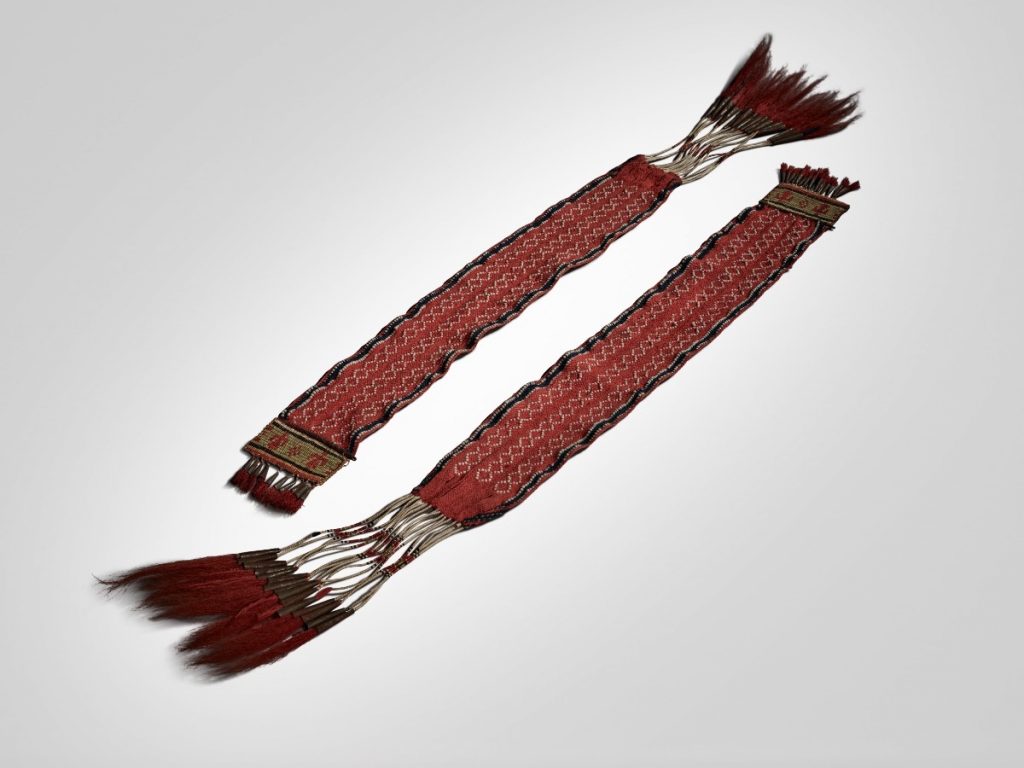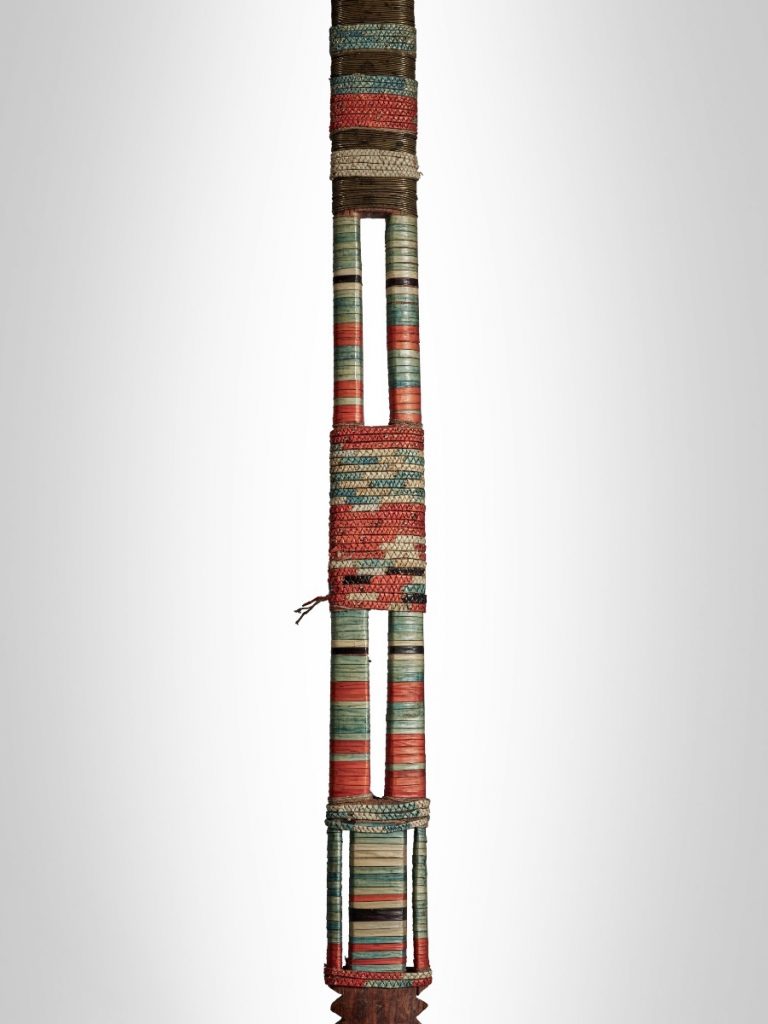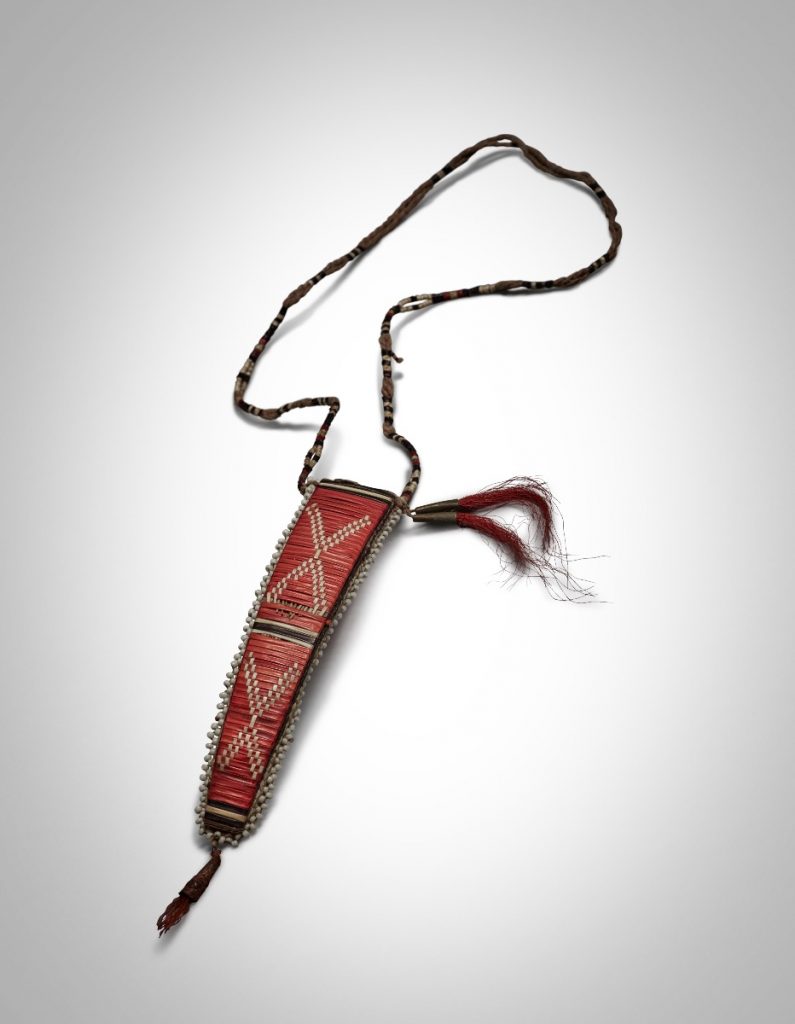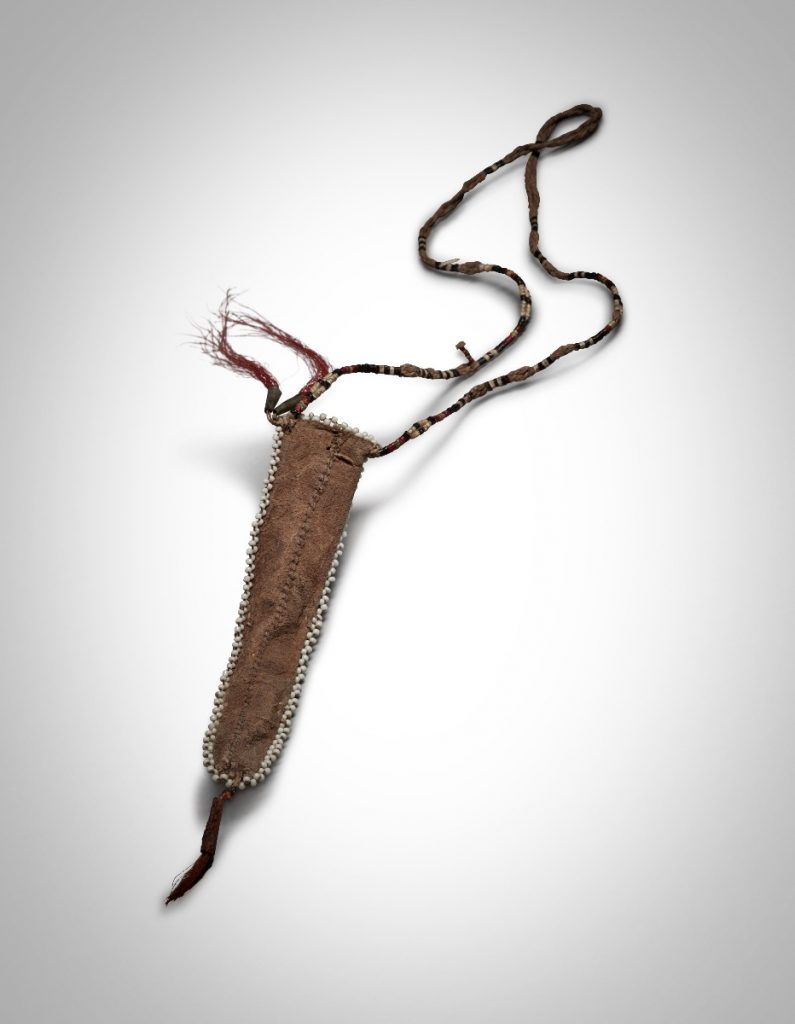From the Toledo Museum of Art

The Toledo Museum of Art (TMA) is delighted to announce that it has been able to acquire twenty-four beautiful examples of 18th century Anishinaabek and Haudenosaunee art. Until 2005, these items were in the private family collection of Scotsman Alexander Farquharson. He had served in the British Army from 1758 to 1762, and likely received these items as diplomatic or personal gifts. The collection includes quillwork, beadwork, moose hair embroidery, birchbark and dolls made of wax and cloth. These works of exceptional artistry were created by both Indigenous and European artists. Surviving letters from the Farquharson family archives mention some of those items, which were privately owned for more than 250 years at the Farquharson home in Scotland (Invercauld House and later Braemar Castle). In 2005, a private collector in the United States purchased the collection, a fortunate decision that allowed the Toledo Museum to acquire the collection in its entirety.

Many notable and important heritage items are included in this collection. A knife sheath of Haudenosaunee manufacture retains its vibrant color in the contrasting red and white quills, as well as its splendid details of beadwork, tin cones, and red-dyed deer fur. An exceptional quilled treaty pipe from the Eastern Great Lakes region is composed of an openwork, tubular wood stem, bound together with fine wire and braided and plain quillwork in orange, ivory, black and green. It remains in pristine condition and is one of the rarest items in the collection, along with a pair of finger-woven pictorial garter pendants from the same region. These quilled and beaded garters are embellished with metal cones, red-dyed fur and intricately quilled thunderbird motifs. Each object in the collection speaks eloquently of the complex systems of alliances and governance among Great Lakes Indigenous nations of the 18th century and are all stunning examples of creativity, innovation, and complex social and political practices.

As Adam Levine, the TMA Edward Drummond and Florence Scott Libbey director and CEO states “This recent acquisition affords the Toledo Museum of Art the opportunity to introduce visitors to an early period in American history when Indigenous and European people sought to exchange both objects and knowledge. Pairing this esteemed collection with other superlative works in the Museum’s holdings offers enriching encounters with art and history that span time, geography and culture.”

The Toledo Museum of Art is collaborating with GRASAC; through this collaboration, curators and conservators will gain insights into the proper conservation, display, and long-term care of these heritage items. The collection will be on view at the TMA from March 1 through June 29, 2025 (Mark your calendars!), with efforts already underway to convene a GRASAC gathering onsite to learn from the relatives in this collection and to bring the collection into the GKS.
* All images courtesy of Sotheby’s.
